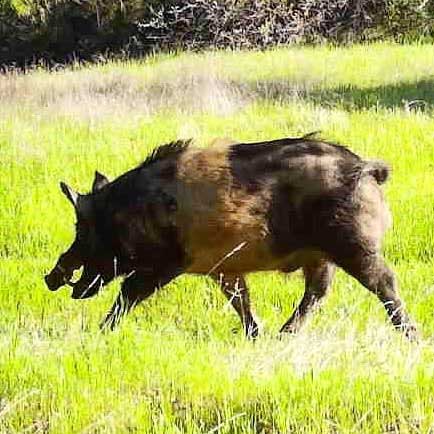
California’s wild landscapes offer an abundant, challenging, and often underrated hunting opportunity – wild hogs. These formidable creatures not only present an exciting hunt but also require hunters to be well-prepared, respectful of Wild hog hunting California regulations, and mindful of the environment. At Conservative Game Management, we’ve compiled the essential guide to help both novice and experienced hunters understand and maximize their wild hog hunting experience in the Golden State.
California’s diverse terrain, from its coastal areas to the rugged Sierra Nevada, provides one of the best places for wild hog hunting in California. However, knowing where to find them involves understanding their habits and the environments they frequent.
Originally introduced by European settlers, California’s wild hog population has flourished, causing significant ecological impact and, thus, creating a need for controlled hunting.
Navigating the legal aspects is crucial. California requires all hunters to hold a valid hunting license. Additionally, while some areas necessitate specific permissions or tags, others may be restricted or entirely off-limits.
Beyond the basics—such as a reliable firearm and ammunition—suitable clothing, hunting knives, and a first-aid kit are indispensable for a successful and safe hunt.
While rifles are popular, the terrain and hunting style may necessitate other firearms like shotguns or bows. Similarly, ammunition choice can significantly impact the effectiveness and ethics of the hunt.
Hunting dogs can be invaluable, particularly for tracking in dense vegetation. Their use, however, requires understanding and adherence to ethical and safety considerations.
This method involves quietly walking and watching for signs of hog activity, requiring patience and stealth but rewarding hunters with an exhilarating experience.
Legal in some regions, baiting can be an effective strategy. However, it’s essential to use legal bait and comply with regulations to maintain the integrity of the sport and the ecosystem.
Hunting at night can offer unique advantages, as hogs are nocturnal. Nonetheless, it requires additional equipment, like night vision, and heightened safety measures.
Wild Hog hunting California can be dangerous. Therefore, understanding and adhering to safety guidelines—such as identifying your target and what’s beyond it—are paramount.
Ensuring that your hunt does not negatively impact the environment or non-target species is crucial. This involves following principles such as “Leave No Trace.”
Ethical hunting practices ensure a swift end for the animal, minimizing suffering. This not only respects the animal but also reflects positively on the Wild Hog hunting California community.
At Conservative Game Management, as the best Wild hog hunting California outfitters we believe in responsible and sustainable practices for Wild Hog hunting California that ensure the continued health of California’s ecosystems and wildlife populations. By following this guide, we hope to not only enhance your hunting experience but also contribute to the conscientious and ethical pursuit of this challenging and rewarding sport.
Contact us at (805) 800 8182 We’re excited to help you embark on or continue your journey this California wild pig hunting season. Call today and let us assist you in preparing for your next hunting adventure responsibly.
© Copyright 2023-Present Conservative Game Management. All rights reserved.
Hunting Outfitter Websites by Outdoor Marketers